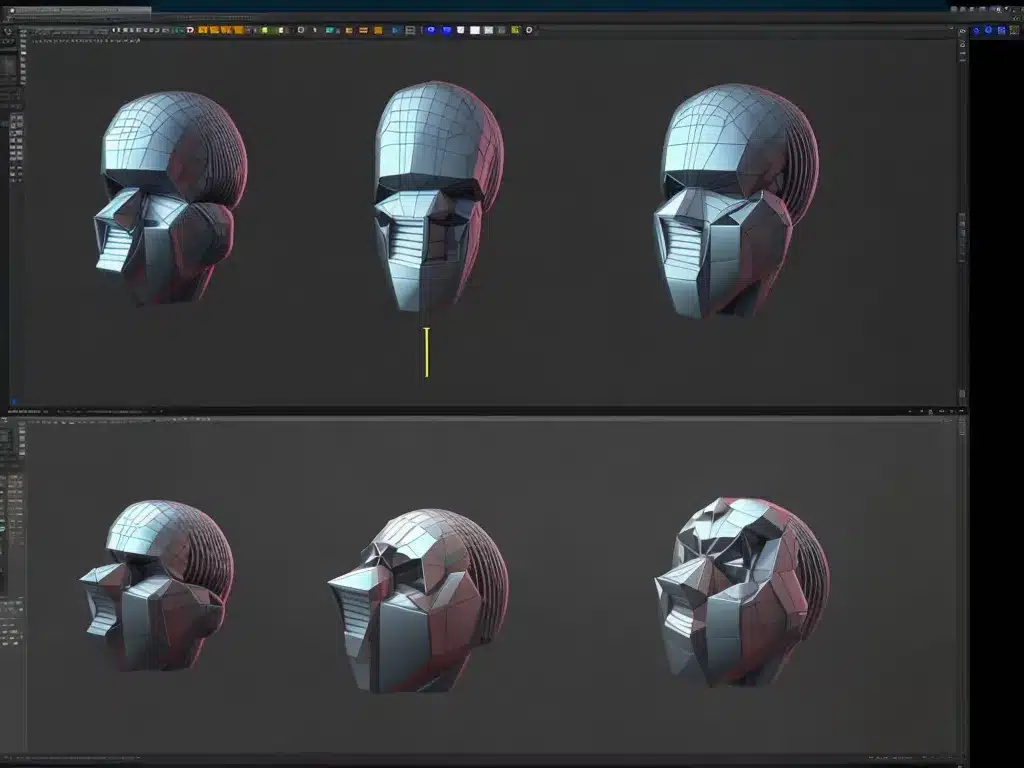
Introduction
As a 3D animator, one of the most important decisions I need to make is whether to render my animations on the CPU or GPU. Both have their advantages and disadvantages that impact performance, quality, and cost. In this article, I will compare CPU vs GPU rendering to help you decide which is best for your 3D animation projects.
How CPU and GPU Rendering Works
To understand the differences between CPU and GPU rendering, it’s important to know how each one works:
CPU Rendering
- The CPU (Central Processing Unit) is the main processor inside your computer.
- CPU rendering relies solely on the CPU to perform all the complex calculations required to generate each frame of 3D animation.
- The CPU renders each pixel in a sequential order, one at a time.
- CPUs have a few cores optimized for sequential serial processing.
GPU Rendering
- The GPU (Graphics Processing Unit) is a specialized electronic circuit designed to rapidly process graphics and video.
- GPU rendering offloads the rendering calculations to the GPU, allowing the CPU to handle other tasks.
- The GPU contains hundreds of smaller cores optimized for parallel processing.
- This allows the GPU to render multiple pixels simultaneously, in parallel.
Advantages of CPU Rendering
Here are some of the main benefits of rendering 3D animation on the CPU:
Wider Hardware Compatibility
- CPU rendering relies only on the CPU, so it will work on any ordinary computer or laptop, as long as it meets minimum spec requirements.
- GPU rendering requires a dedicated graphics card, which isn’t always available, especially on laptops.
Lower Cost
- Upgrading your CPU is generally cheaper than buying a high-end GPU. You may already have a decent consumer-grade CPU capable of handling your projects.
More Memory Access
- The CPU has faster access to RAM and storage compared to the GPU. This allows larger scenes and assets to be rendered by the CPU.
Advantages of GPU Rendering
Here are some of the key benefits that make GPU rendering popular for 3D animation:
Faster Render Times
- The sheer parallel processing power of GPUs allows them to significantly reduce render times compared to CPU alone. For complex 3D animations, GPU can be upto 50x faster!
Higher Visual Fidelity
- GPUs can render images with enhanced visual quality and realism by performing more advanced calculations per pixel. This really brings out the details.
Lower Power Consumption
- GPU chips are designed to deliver optimal performance per watt. For the same rendering task, GPU consumes less electricity compared to taxing the CPU.
Background Rendering
- With GPU handling renders, the CPU is free to work on other tasks in the foreground. This improves overall workflow and productivity.
Key Considerations for Decision Making
When deciding whether to use CPU or GPU rendering, keep the following considerations in mind:
- Render speed – Will GPU acceleration help meet tight deadlines?
- Render quality – Does the scene require highly complex shaders/lighting?
- Cost – Can you afford a high-end GPU or use cloud rendering?
- Mobility – Do you need to render on a laptop without discrete GPU?
- System compatibility – Does your hardware+software support GPU rendering?
- Power consumption – Are you rendering animations repeatedly over long periods?
Recommendations
Based on the above comparison, here are my recommendations:
-
For professional studios, invest in GPU rendering to maximize efficiency and quality. The faster render speeds lead to quicker project turnaround.
-
For hobbyists and indie animators, CPU rendering may be the optimal choice to save costs. Shorter animations can render overnight on a consumer CPU.
-
For mobile animators needing to render on laptops, use cloud based GPU rendering services if available. This provides GPU acceleration without buying expensive laptops.
-
For maximum flexibility, consider a CPU+GPU hybrid rendering setup. Use GPU for final high quality renders, and CPU for quick preview renders during the iterations.
Conclusion
CPU rendering and GPU rendering both have their own pros and cons. There is no single perfect choice – it depends on your specific needs and constraints. Analyze your use cases, workflow, budget, and hardware to decide whether CPU or GPU rendering is more suitable for you. With the right choice made, you can create amazing 3D animated content, render it efficiently, and make your creative visions come to life!












